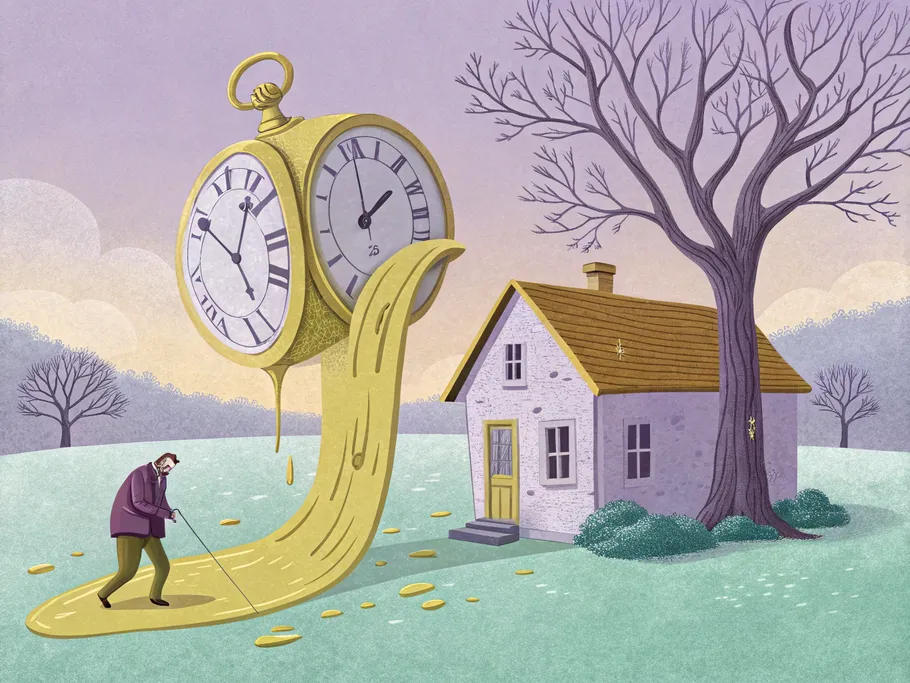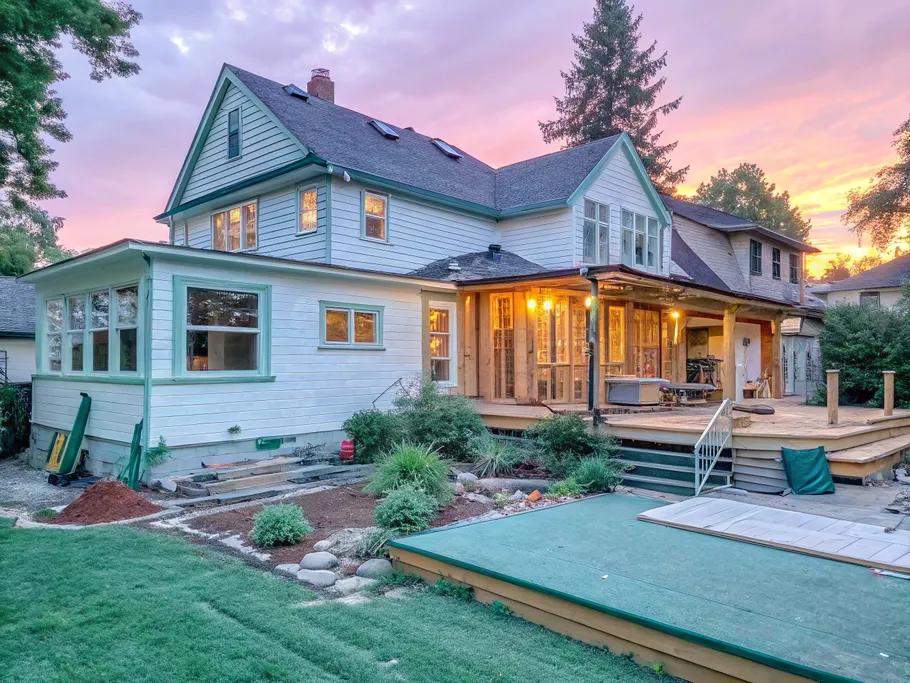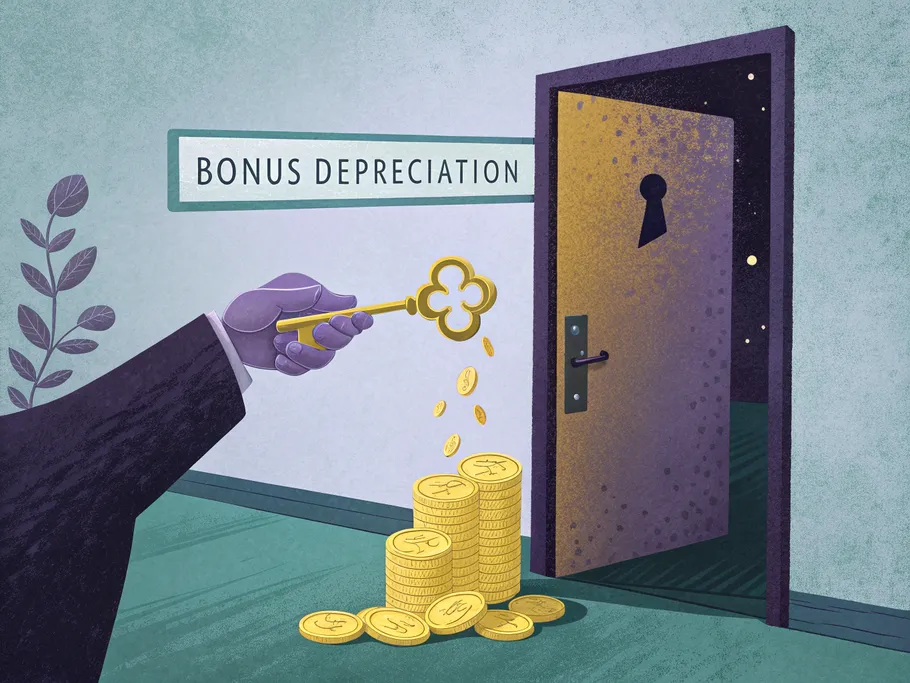Hey there, fellow landlords and real estate aficionados! Ever feel like the taxman takes a bigger bite out of your wallet than necessary? Well, grab a seat (and maybe a celebratory beverage) because we’re about to dive into the wonderful world of bonus depreciation on residential rental property improvements. It’s like finding a hidden door in your favorite game—unlocking tax savings you never knew existed!
So, here’s the scoop: while you can’t take bonus depreciation on the actual rental property itself (sorry, the IRS says the building sticks around too long for that), you can claim it on certain property improvements. These qualified improvement properties are eligible for bonus depreciation, allowing you to deduct a hefty percentage of their cost upfront. It’s like getting a tax deduction cherry on top of your renovation sundae.

By claiming this special depreciation deduction, you’re not just lowering your tax bill—you’re also lowering your cost of capital and improving your property’s pre-tax rate of return. In plain English? More money stays in your pocket now, rather than trickling out over the next few decades. Nice, right?
In this article, we’ll unravel how bonus depreciation on residential rental property improvements works, with examples that’ll make you say, “Why didn’t I know about this sooner?” So, let’s get started!
Related: Accumulated Depreciation
Bonus Depreciation Explained
Alright, let’s break it down. Bonus depreciation is like the IRS giving you a fast pass to tax savings. Instead of depreciating the cost of an eligible asset over the usual number of years (yawn), you get to deduct a significant chunk—or even 100%—of the cost in the first year you put it into service. Think of it as a tax time machine, bringing future deductions into the present.
For us real estate investors, this is pure gold. Bonus depreciation reduces your taxable income without touching your cash flow. In other words, it’s like enjoying a donut without any of the calories. Sweet!
But here’s the catch: when it comes to rental properties, you can’t depreciate the land itself. The IRS figures land lasts forever (unless you’re into volcano-front property). So, savvy landlords aim to allocate as much of the purchase price as possible to the building’s value to maximize depreciation.
Now, since residential rental properties have a useful life of more than 20 years (27.5 years, to be exact—talk about commitment!), you can’t claim bonus depreciation on the property itself. Instead, bonus depreciation is reserved for property improvements and certain personal property used within your rental. That’s where the real tax-saving magic happens.
Compared to the slow and steady straight-line or declining-balance depreciation methods, bonus depreciation lets you deduct a whopping 100% of the cost of qualifying improvements in the first year. It’s like getting the whole pizza now instead of one slice at a time. Who wants to wait years to enjoy their deductions when you can feast today?
Understanding Bonus Depreciation on Residential Rental Property Improvements
So, how does bonus depreciation actually work for your rental property improvements? Glad you asked!

When you make qualifying improvements to your rental property—think new HVAC systems, upgraded plumbing, or that fancy kitchen remodel—you can deduct the entire cost in the first year the improvement is placed into service. But remember, we’re talking about the improvements here, not the entire building.
To qualify for this special depreciation deduction, the improvement must have a useful life of 20 years or less. It’s like the IRS is telling us, “We know buildings stick around, but those shiny new appliances? They’re not gonna last forever.”
To claim bonus depreciation on your property improvements, you’ll need to fill out Form 4562 and file it along with your business tax return. Specifically, report your calculated bonus depreciation under Part II, Line 14. Don’t worry; it’s less intimidating than it sounds. Think of it as your ticket to tax savings town.
The IRS considers improvements that enhance the interior of a building as qualified improvement properties. This includes upgrades like new plumbing, drywall, insulation, and electrical fixtures. However, it doesn’t include the building’s internal structural framework, enlargements, elevators, or escalators (so maybe hold off on installing that dream escalator in your duplex).
Improvements that qualify for bonus depreciation generally fall into three categories:
Betterments
These are expenses that make your property better than it was before. Maybe you’re fixing a pre-existing defect (finally addressing that leaky roof), enlarging the property (adding a new bedroom to boost rent potential), or increasing the capacity or strength of the property (like reinforcing the foundation). If it adds value and improves the property, it’s likely a betterment.
Adaptations
Adaptations involve changing part of your property to a new or different use that isn’t consistent with its original intent. For example, converting an unused attic into a cozy studio apartment or transforming a dingy basement into a separate living unit. It’s like giving your property a whole new purpose—and getting rewarded for it.
Restorations
Restorations are all about bringing your property back to its former glory (or even better). This could include replacing a major component like a roof, windows, or installing a new central HVAC system. It’s the property equivalent of a spa day—and yes, you get to write it off.
Rules for Bonus Depreciation on Residential Rental Property Improvements
Now that you’re itching to claim some bonus depreciation, let’s go over the ground rules. The IRS is generous, but they do have some stipulations (surprise, surprise!). Here’s what you need to know:
- New or Used Items Qualify: Bonus depreciation can be claimed on both new and used property improvement items. So whether you’re installing brand-new appliances or repurposing gently used ones, you’re still in the game.
- The 100% Bonus Depreciation Window: For qualified improvements acquired and placed in service between September 27, 2017, and January 1, 2023, you can deduct 100% of the cost. It’s like a limited-time offer you don’t want to miss.

- Phase-Out Schedule: Starting in 2023, the bonus depreciation percentage decreases by 20% each year:
- 80% for 2023
- 60% for 2024
- 40% for 2025
- 20% for 2026
- 0% for 2027 and beyond (sadly, all good things come to an end)
- Immediate Deduction: Bonus depreciation allows you to deduct a large percentage—or even the full cost—of capital improvements in the same tax year the expense is incurred. No need to wait decades to reap the benefits.
- Useful Life Requirement: To qualify, the improvement must have a useful life of 20 years or less. Think of assets that aren’t going to stick around forever—unlike that mysterious stain on your favorite shirt.
- No Related Parties: The improvement must be purchased from an entity or individual you’re not related to. So buying that HVAC system from your cousin’s best friend’s uncle? Probably not going to fly with the IRS.
- Eligible Improvements: According to IRS Publication 527 (2022), examples of qualifying improvements include:
- Additions: Bedroom, bathroom, deck, garage, porch, patio.
- Lawn & Grounds: Landscaping, driveway, walkway, fence, retaining wall, sprinkler system, swimming pool.
- Miscellaneous: Storm windows or doors, new roof, central vacuum, wiring upgrades, satellite dish, security system.
- Interior Improvements: Built-in appliances, kitchen modernization, flooring, wall-to-wall carpeting.
- Heating & Air Conditioning: Heating system, central air conditioning, furnace, duct work, central humidifier, filtration system.
- Insulation: Attic, walls, floor, pipes, duct work.
- Plumbing: Septic system, water heater, soft water system, filtration system.
Examples of Residential Rental Property Improvements Eligible for Bonus Depreciation
Let’s bring this to life with some real-world examples. Imagine you’re a landlord who’s just made the following improvements to your rental property:
- Added a New Deck: You built a spacious deck to enhance outdoor living space for your tenants. Not only can you potentially charge higher rent, but you can also claim bonus depreciation on the cost of the deck.
- Upgraded the HVAC System: You replaced the old, inefficient heating and air conditioning system with a new, energy-efficient model. This qualifies as a restoration and is eligible for bonus depreciation.
- Modernized the Kitchen: You gave the kitchen a facelift with new built-in appliances, granite countertops, and sleek flooring. These interior improvements can be fully deducted under bonus depreciation rules.
- Landscaping Overhaul: You invested in landscaping, adding a sprinkler system, new walkways, and a charming fence. These lawn and grounds improvements are not only visually appealing but also tax-deductible.
By making these investments, you’re not just enhancing the property’s appeal to tenants—you’re also leveraging tax rules to recoup your costs faster. It’s like turning your property into a tax-efficient, income-generating machine.

Takeaways
- Bonus Depreciation is a Powerful Tool: It allows you to deduct a large percentage—or even 100%—of the cost of qualifying property improvements in the first year.
- Focus on Qualifying Improvements: Improvements must have a useful life of 20 years or less and improve, restore, or adapt your property.
- Time is of the Essence: The 100% bonus depreciation rate is phasing out after 2022, decreasing by 20% each year until it disappears in 2027. Plan your improvements accordingly.
- Fill Out the Right Forms: Remember to claim your bonus depreciation on Form 4562, filed with your business tax return.
- Consult a Tax Professional: Tax laws can be tricky, and while we’ve aimed to simplify them here, it’s always wise to get personalized advice.
So there you have it! Bonus depreciation on residential rental property improvements is a savvy way to accelerate your deductions and keep more money in your pocket today. It’s like finding a hidden level in a game—once you know it’s there, you can’t help but take advantage. Happy investing!
